When “the Judgement of Paris” crowned Cabernet king in Napa in the late 1970’s, it proved a back-handed boon for Walter Schug, though he didn’t know it at the time.
Schug would emerge a leader in the Valley’s wine community, and instrumental in helping form Carneros AVA, Sonoma’s first official wine growing region geared towards Pinot Noir and Chardonnay.
Walter Schug died in October 2015.
This exclusive interview grew out of a recent site visit to Schug Winery to converse with Walter’s son Axel Schug and wine maker Michael Cox.
I walked away with over 2 1/2 hours of recorded interview, which translated into over 12,000 transcribed words.
I’ve done my best to edit those notes respectfully, keen to keep the ‘voice’ of my hosts intact, and the spirit of Walter Schug – Pinot grower, patriarch, and pioneer – alive. Please enjoy this glimpse into one of Sonoma’s most respected, and best kept secrets.
“Stay in one spot long enough, the world will come right back to you.”
-Axel Schug, Schug Winery
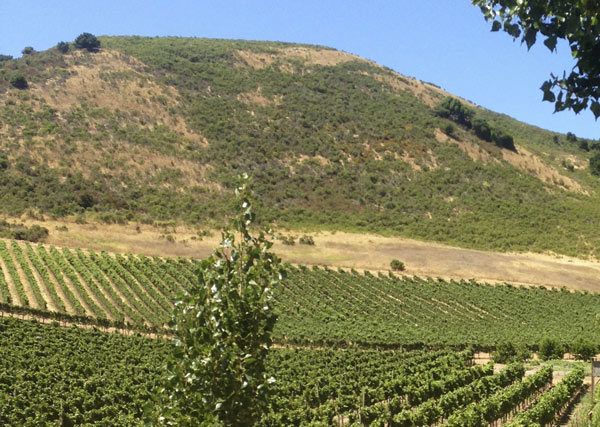
LM Archer: Your father, Walter Schug, grew up on a Pinot wine estate in the Assmanshausen region of Germany’s Rheingau, and attended University of Geisenheim and UC Davis before immigrating to California with your mother Gertrud in the early 1960’s. Can you share a bit about how your father ended up in California?
Axel Schug: Back in the 60s he [my father] was head of grower relations for Gallo. And while that might seem like a rather inauspicious start, back in those days, Gallo was it. You know, there were 600 growers assigned to him, 5000 acres (2000 ha) of vineyards in Napa county, Sonoma County, Mendocino, Lake Counties. He was the single largest grape grower at the time.
Joe Phelps hired my father away from Gallo because he knew where all the people were, and had established relations with them. Because in those days, if you wanted to make your own wines, you had to pretty much plant your own vineyards, or find a way to get those vineyard owners to work with you.
LM Archer: What prompted your father to leave Phelps and start Schug Winery?
Axel Schug: The history at Phelps was pretty amazing; Napa’s first Bordeaux blend (Insignia), first Syrah, first late harvest Riesling. You know, Phelps started out being mainly a white wine house – started out making Sauvignon Blanc, Riesling a tiny bit of Chardonnay, some Pinot Noir, and some Cabernet.
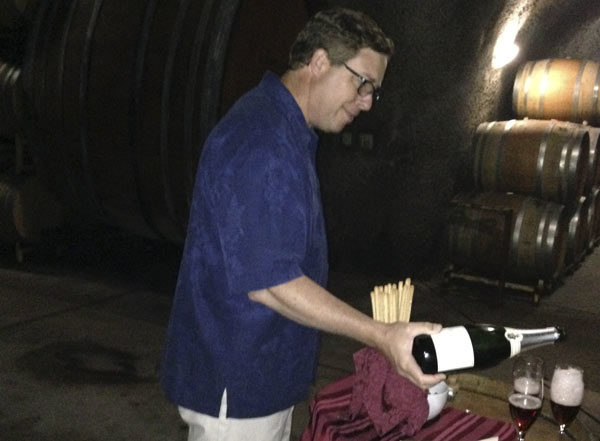
But the Cabernet got the most press, so they decided to send their focus that way, Pinot Noir was floundering… Nobody was drinking it back then, so they discontinued it in 1980, and gave my father the option to keep making it, to make it himself. So he didn’t leave Phelps, per se – he eventually did, but they let him stay and make his own wine – and that’s very misunderstood. I think that’s where my father’s falling out with Parker [Robert J. Parker] was, because Parker wrote some things about my father leaving, and my father said, “No, I’m not leaving, Mr. Phelps is just kind enough to let me follow my passion.”
Back in those days, you just didn’t do that – you didn’t say “hey, thanks for all the scores, I’m gonna go make my own wine now.” You were a company man. That was back in the day when maverick wine makers really didn’t exist.
LM Archer: After your father left Phelps, he eventually settled on purchasing land in Carneros. Why Carneros?
Axel Schug: My father knew that Carneros was the ticket, Carneros, by all means, was an idyllic place to grow vines. It’s lucky we did find this site, because if we had been a little bit higher up or lower down, or the soils had been more generous, it might not be the perfect place anymore. That’s always been my father’s passion. He wants to make good pinot noir, but he also wants it to reflect where it’s grown.
Ultimately, we want to stand our ground, and do what we believe in, and do it better every year, but not compromise what we’re about. So now you hear people talking about the ‘return to elegance’, making wines with less alcohol. Hello, we’ve never changed! We’ve been doing the same thing for 36 years. It’s just we’re not making a big to-do about it.
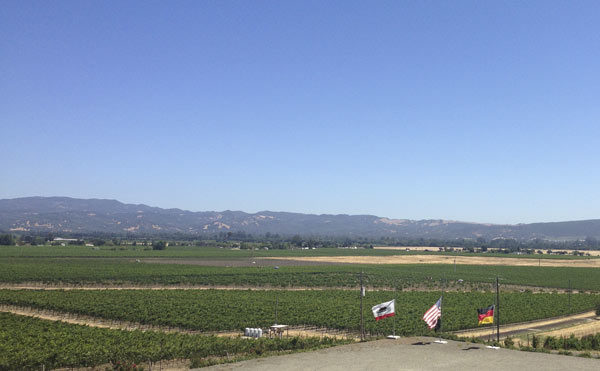
LM Archer: Talk about the terroir of Carneros. What makes it so perfect for Pinot Noir and Chardonnay?
Axel Schug: We have a sub-layer of broken basalt [here at Schug Winery estate]. Basalt is volcanic in origin. But it forms underground; it cools or hardens underground, so it tends to be whitish grey as opposed to black. And then through upheaval, it gets fractured.
The soil changes from a clay loam at the bottom of the vineyard, and we think that it may even have been ancient seabeds, into Haire loam, which is a looser soil, tends to be better for Pinot Noir. Pinot Noir likes to have dry soil, and in the lower blocks we have Chardonnay.
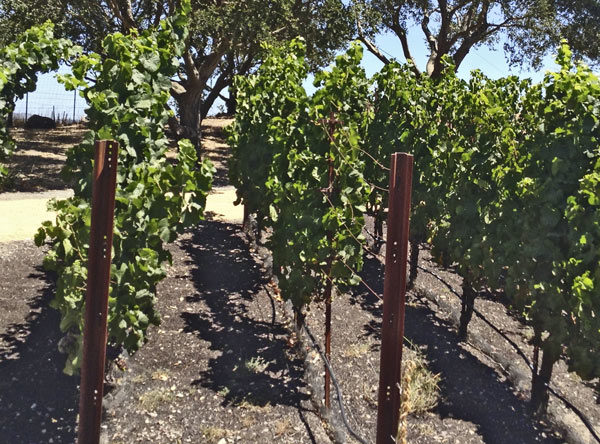
In Carneros you really can’t dry farm. The fact is that the vineyards who dry farm do so because they can. If you’re in the Russian River Valley, areas with sandier soils, the vines are going to go down, they can find the water, the water’s going to be there.
But here in Carneros, with all this rock, and the water just draining away from the roots, and more importantly, the wind. The wind is a huge desiccating factor here. These wines, in order to stay healthy, you’ve got to water them a little bit during the summer. But you don’t want to move water too much, just enough water to keep the vines stressed and metabolism healthy. Last year, our summer started out relatively cool, and the rain came late, so we didn’t water for the rest of the summer. The key is not watering too much. Our yields are naturally low here, just because of the climate. We’re lucky if we can get Grand Cru yields; 1.5-2 tons per acres (*) are pretty much the norm for our community. We’d like it to be more. ( (*) Ed:s note: 2 tons per acre is approximately 30-35 hectolitre per hectare)
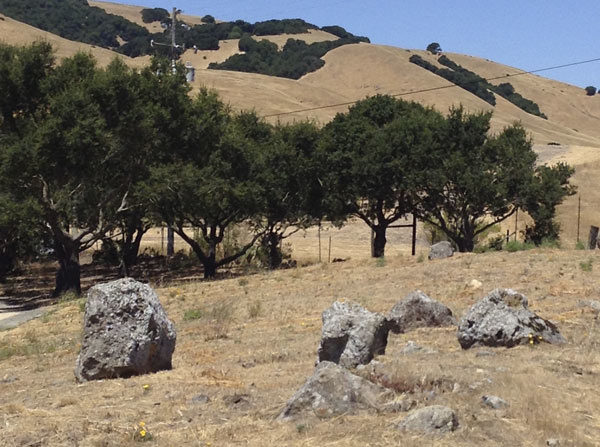
So the wind really has a huge factor not only upon the yields, but also the style here. Carneros Pinot Noir, part of it’s the soil, but much more of it, at least for our site is that the berries grow much smaller here – the juice-to-skin ratio is much smaller than say the Russian River Valley – so you’re going to get more structure, more bite to the wine from the skin as opposed to the fruitiness or jamminess in a calmer, less windy area.
That, combined with older clones. Since we planted in 1989, we didn’t plant all these new, diverse clones. We are currently replanting, and now that there are more options to us, so we’re going with newer options. Yields are a little better, stylistically about the same.
We’re first and foremost believers in making a wine that reflect its sense of place. You know, you’ve heard that over and over again, “terroir, terroir, terroir,” but terroir is not just the dirt. It’s everything above it. If it isn’t, then maybe they need to re-define the word. Because I’d say climate comes first here [in California], soil second. That’s the difference between there [Europe] and here [California].
LM Archer: Can you touch on other factors that contribute to Carneros’ unique status as a sub-region within Sonoma?
Axel Schug: We’re in the Sonoma Valley here, but it’s also the Carneros region; this is the western edge of Carneros. So there’s a Napa Valley side, and a Carneros county side. But the whole intent of Carneros as California’s first AVA was to find an area that had consistent characteristics for Pinot Noir from one end to the other, and it didn’t matter that it crossed the county line. They created Carneros as an AVA in 1983. My father was on the board that created that AVA. Since then, I think Sonoma County now has, I think, 16 different AVA’s, maybe more, but this was the first. [Author’s note: Sonoma County now has 17 AVAs.]
We can also qualify as Sonoma Coast designation here because the Sonoma Coast AVA overlaps with several cool microclimate AVAs from Carneros to the south, through the Petaluma Gap, which is on the west side of the ridge, up through Green Valley, Russian River, Fort Ross-Seaview. Sonoma Coast should really just be considered to be where Pinot Noir & Chardonnay grow best. But people try to make it something more than it is. It’s a very diverse area, but ultimately it’s all about proper climate and land for Pinot Noir and Chardonnay.
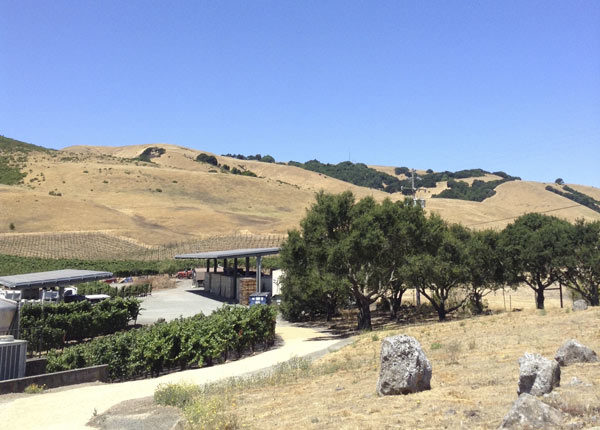
We’re fairly far inland, but what makes it a relatively cool climate here – it’s not this breeze here – the southerly breeze is actually atypical, and it’s indicated to us to be in a small, little warm-up phase the next few days. The normal pattern is that right about this time of day [1 PM] it’s dead calm. The fog has just broken, has peeled back down to the bay, and around 3-4 PM in the afternoon, we start getting a pretty good breeze just about like this, but it’s coming from the other direction, from the Petaluma Gap. And that low saddle on the hills is a big a hurdle the wind has from here all the way to the Pacific Ocean. If anything, it’s more like a funnel – a tunnel – and wind gets super concentrated through there, and actually picks up speed, so it leaves the ocean at maybe 15 mph (25 km/h) and comes through there [Petaluma Gap] at 30 mph (50 km/h). And the reason for that is that the Central Valley on the side of those mountains is heating up as the day progresses; as the heat rises, it creates like a plunger effect. And that plunger sucks the air in through the Carquinez Straights, which are down there, and the air ends up going from the Golden Gate through the bay from south-west to north-east, and from Petaluma Gap to the bay from north-west to south-east. It’s like this [swirl gesture]. So this part of Sonoma County, even though it’s as far inland as you can go shy of being in, say, Knight’s Valley, is actually cooler than Healdsburg.
LM Archer: Schug Winery utilizes old world techniques while embracing new technology. How did your father lead the way introducing technology to the wine industry in Napa and Sonoma?
Axel Schug: My father has always worked with European wine making equipment manufacturers, even when he was at Phelps. There wasn’t a lot of that here in the United States. Rieger Company has always been his favorite source for tanks. These are plunger tanks that have a large spindle on the inside with a hoop and spokes that dunks the juice back and forth. Inside that plastic, protective housing is a plunger shaft that pushes down with pneumatic pressure.
This tank on the left is actually on its side, and that uses a different mechanism that resembles a cement mixer inside that gently coax the fruit back down into the juice. But the plungers are a much better mechanism, because the entire cap gets submerged in one motion. The fruit doesn’t get damaged; it doesn’t get torn or ripped up. The plunger is stainless steel, and looks like a wagon wheel on its side. It gently pushes down, and all the cold juice that settles to the bottom during fermentation is then pushed up to the middle and over the top of the cap. Your cap temperature, which tends to become the hottest, gets chilled down by the cold juice, and everything kind of evens out to around 26 degrees C, which is a relatively cool fermentation for Pinot, because it can tend to get kind of hot otherwise.
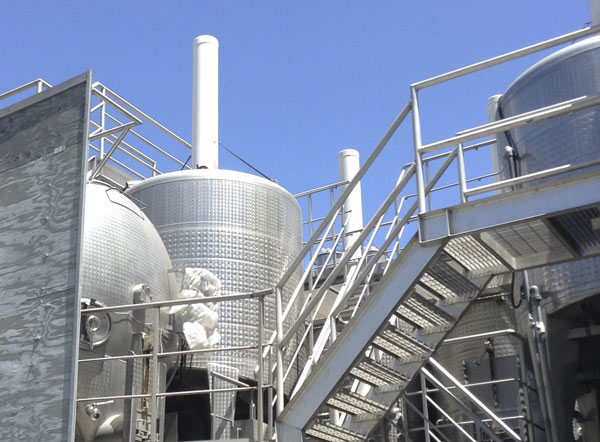
He also introduced these oak casks. My father worked with a lot of these at Phelps. They’re from Germany. We call them German oak ovals, but that’s misleading, because the oak itself has no language. These are neutral, they are not toasted, and they are not intended to give flavor. The wood is probably from Hungary, built in 1950s or 1960s. We bought these used, both for Phelps and for our own use from the Rieger Company, the same company that makes our stainless steel tanks.
But this is kind of a throw-back to old world tradition. These definitely have a special role, and you really just don’t see anything like this intermediate size oak in wine-making here in the United States.
We want to use these for letting our reds complete their fermentation. The primary fermentation outside on the skins, the secondary fermentation inside these cool casks, where the wines don’t have to be filtered afterwards, because all those fine sediments from the primary fermentation are going to settle out below this racking valve, whereas in a barrel, it’s nearly impossible to completely settle out. And then you have to pump the barrel out, which disturbs the sediments. So we can avoid filtration at least at key stages, while the wine is still young and fragile, by letting them finish out in these larger casks. And then once the wine is clean, then we can go to the barrique or the French oak barrel.
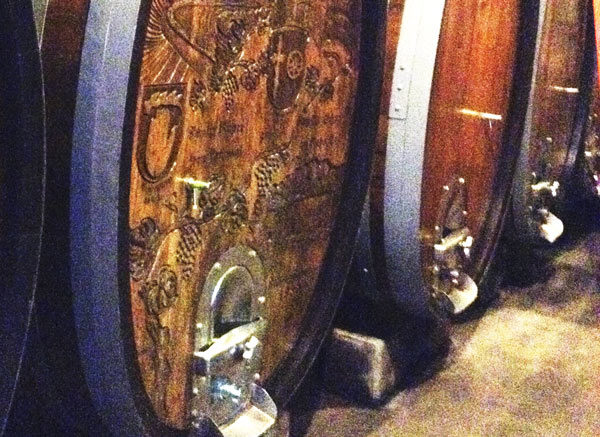
The other reason we love these is because some of the wine never goes to the barrique. In this case, we already have a blend of some of our Sonoma Coast Pinot vineyards here, whether it be from our Carneros vineyards here, or the Petaluma Gap. And we’re starting to make our Sonoma Coast Pinot Noir blend in here. We want the fruit to stay high, to keep it elegant, and by putting it in French oak, you’re going to lose the fruitiness and gain some structure. So by using these [oak ovals], it still matures, it still breaths, it’s still allowed to develop, but without the influence of oak flavor, because these are 40-50 years old, and have long ago given up their accent.
My father started importing equipment from these manufacturers. [Robert] Mondavi brought in a bunch of these, Phelps had some, and so when my father moved out of Phelps … he had to go buy his own casks, since he wouldn’t be using the ones at Phelps.
The first order we received from Rieger of used casks that were already twenty-plus years old, this one here, the first one we got, was carved as a gift to thank my father for all the years of business. This slogan, they came up with it, we didn’t, but it’s perfect for us.
It says, “Whether the wine is from Neckar, from the Mosel, or from the Rhein, like the grape gives it, it should be pure.”
What it means is that the grape is giving something special. You have an obligation to keep that pure, and not influence it any other way than what it wants to be when it grows up.
It could not be more perfect for our philosophy, because that’s what we do.
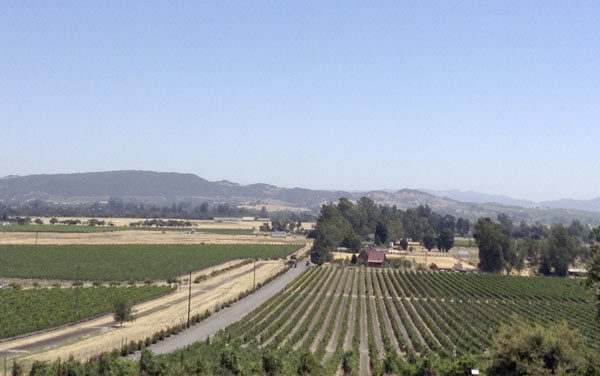
Michael Cox: I think the reason we’ve embraced that over time is again, to bring it back to Walter. Walter was always very forward thinking. For example, he was university-educated at Geisenheim, and ever since I’ve been here, we’ve embraced new technologies. If you can work smarter, that’s sustainable, right, because you’re not wasting time and energy doing things. It’s just us, we don’t have a big army doing stuff. The amount of wine that we put through that cellar with the small amount of people, I get wine maker friends of mine, colleagues, who can’t believe we just have an assistant winemaker, a cellar master, and a bunch of trainees [from abroad each year].
So we’re making smart choices. We embraced ozone early on, when TCA in the cellars was a real question. We looked at ozone. And we reduced the amount of chemicals that we were putting into our groundwater. That’s a natural thing. You’ve got to embrace that. It’s just a smarter use of your resources, right? We have a crossflow filtration. Saved us steps, and makes the fruit shine through. It was a big initial investment, but here we are twenty-eight years later, we’re still going with it.
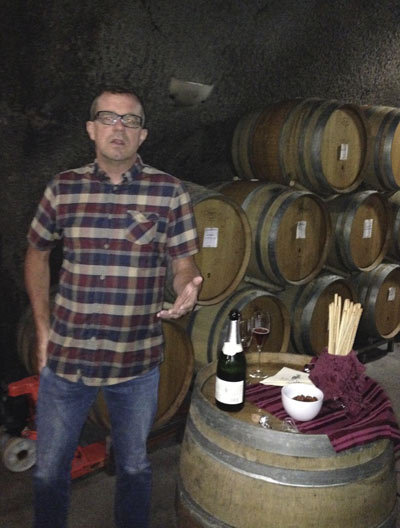
Axel Schug: And before that, twenty-five years ago, wineries were coming to pick up our lees filter, because no one had a lees filter. My father believed in rescuing the wine that’s trapped in the lees. So we have a lees filter because of that. No one our size had a lees filter. This was in the mid-80s.
Michael Cox: People would come through and buy your lees because they’d use them or distil them or whatever. And actually, there are still a lot of wineries who don’t process their lees. But that’s a German thing – let’s not waste. There’s recoverable wine. We’ve always embraced technologies, and looked at new stuff, and not just for the sake of being new. It has to make sense, it needs to be balanced with an economic basis. It’s a small, family owned company, and we have learned to do more with less.
LM Archer: Schug Winery also implemented sustainable practices long before the movement took hold in Sonoma. Why?
Axel Schug: As for our farming practices, my father didn’t know how to do it any other way. [At the time] there were no sustainable practices. It was just what was right, and that’s how you did it. He knew it from growing up on a vineyard that was on very fragile soils, hillside vineyards with very poor nutrients, and he knew that you had to replace what got taken away. That just meant they’d at some point have to lug big buckets of soil back up the hill.
And this vineyard here depicts what he grew up with, only there it was much steeper, with narrow rows just wide enough for a horse’s ass, because that’s for your plow, whereas the old vines in Napa Valley were wide enough for these 12 inches wide tractors. And putting the organic matter back in the soils, in this case, this is our pomace. Makes for great ground cover, it greatly reduces the weeds. For the rest of the vineyard we’ll put the stems in and till that back into the soil. You don’t really want to fertilize a vineyard; you just want to maintain a balance in the organic matter.
We don’t go for any certification or anything like that. Call it whatever term you will, but the nearest thing that it equates to is sustainability. As far as dealing with pests, well, Mother Nature helps us as much as possible. The wind itself really reduces the need for sulfuring. If we do get a little bit of moisture or humidity, usually a good, stiff breeze takes care of any need for sulphuring. And as far as bugs, there’s precious few because of the climate. As for the birds here we do the usual thing [bird boxes]. It’s easy to do, so why not? During harvest, once the berries get ripe, we bring in falcons. Last year the bird’s name was Larry [Bird].
We have about 800 barrels underground. We have no air conditioning here, other than a few units in our offices. The entire facility is self-cooled. When the night air drops below 60 degrees F (16 C), fans turn on, bring in the cold moist, marine air, allowing the humidity to rise again and temperature to drop.
As for our power, we’re on the grid, but pretty much 100% of what we consume is replaced by our solar panels. So we’re running our meter either back or forth, depending upon the time of day, and time of year.
We didn’t do this [sustainable practices] to use it as a marketing tool; we did it because it just makes sense.
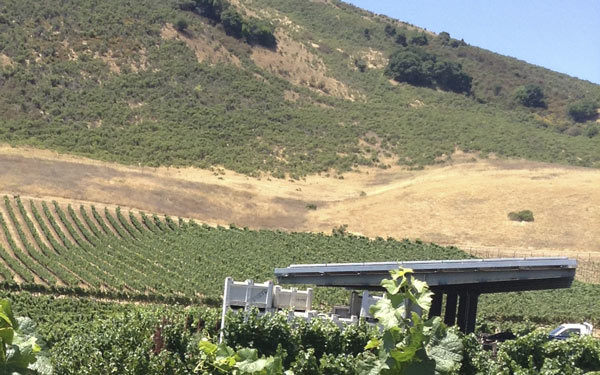
Michael Cox: The reason Walter [Schug] did that is because it made sense. It’s part of being a family operation; a family who lives and breathes in all this. It makes sense to look to sustainability from a long-term view. And again, I look to Walter’s European background. You’re not looking at the immediate ten years, it’s not a ten-year plan to make wine, and then move on to something else. You’re looking at the next generation, and the generation after that. From Walter’s point of view, he was always looking at the long-term.
Part of the sustainability thing is that you don’t do certain things, like you don’t just over-apply pesticides, organic or otherwise. But from Walter’s point of view you’ve always got to think about why you’re doing it. Should you be doing it? Could we have done better? Or a different way? That was always part of the way that Walter looked at things.
So that’s just more of a continuation of Walter’s philosophy of looking at things long-term.
LM Archer: I have to say that it’s really endearing to listen to you two talk about him like he’s still around. You still use the present tense when referring to him.
Axel Schug: You know, I catch myself all the time, because he is. He’s right there [Schug Winery].
In fact, we just met with the architect about our new visitor center. It’s all been part of father’s plans since Day One, so now we’ll have a new 6000 sq. ft (560 sq.m.) visitor center, a place to hold private events. It’s been a long time coming.
And we’re moving forward to showcase more of our exclusive, hard-to-obtain estate grown wines, premium wines of exceptional quality and value. I think we’ll probably make them more readily available outside the Tasting Room later this year.
Yeah, everything we do kinda relates back to Walter.
LM Archer is a freelance writer based in Seattle and California. She is Francophile who considers wine an art and Burgundy the centre of the universe. She is the founder and editor of binNotes | redThread.


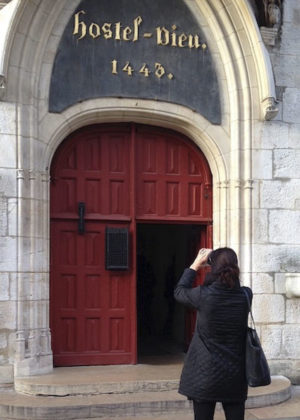

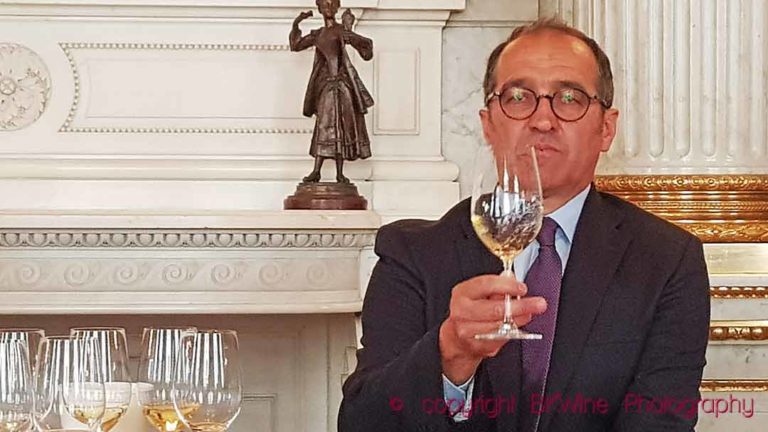
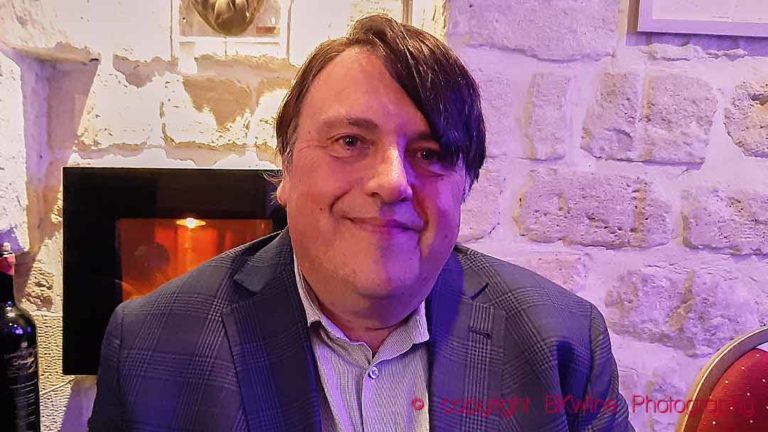





One Response